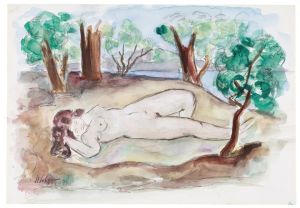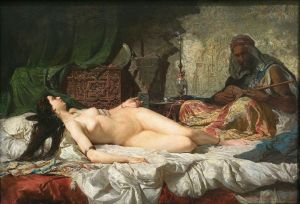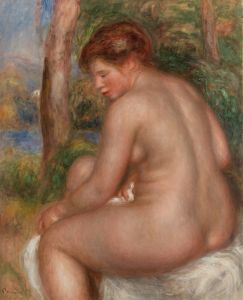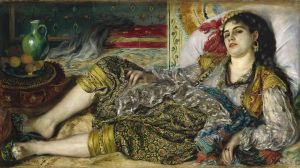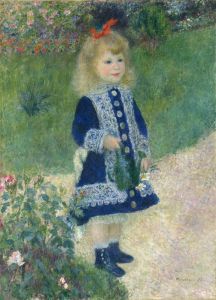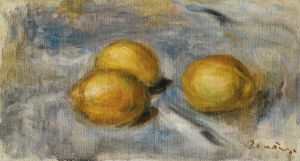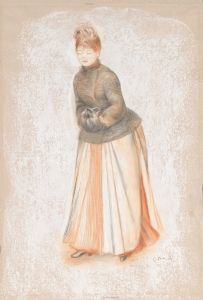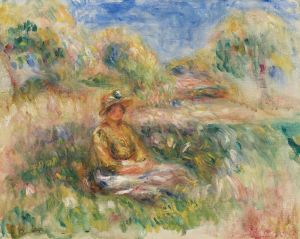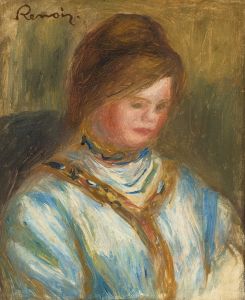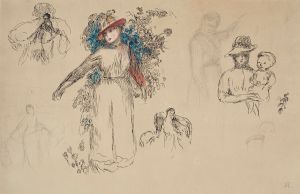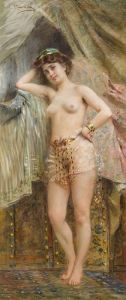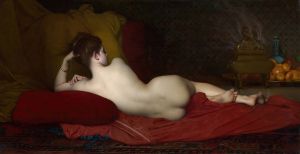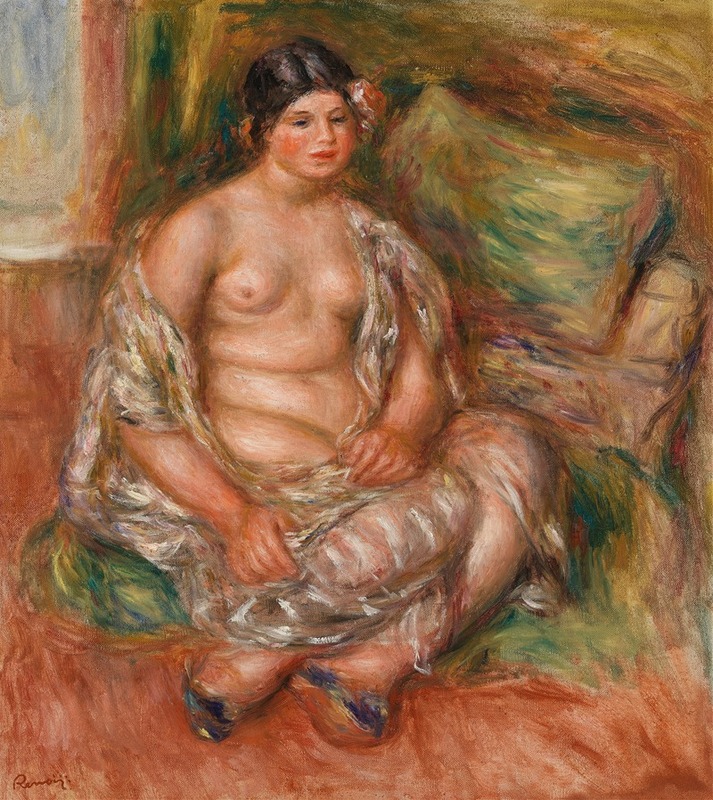
Seated Odalisque
A hand-painted replica of Pierre-Auguste Renoir’s masterpiece Seated Odalisque, meticulously crafted by professional artists to capture the true essence of the original. Each piece is created with museum-quality canvas and rare mineral pigments, carefully painted by experienced artists with delicate brushstrokes and rich, layered colors to perfectly recreate the texture of the original artwork. Unlike machine-printed reproductions, this hand-painted version brings the painting to life, infused with the artist’s emotions and skill in every stroke. Whether for personal collection or home decoration, it instantly elevates the artistic atmosphere of any space.
Pierre-Auguste Renoir's "Seated Odalisque" is a notable example of the artist's work during the late 19th and early 20th centuries. Renoir, a leading figure in the Impressionist movement, is renowned for his vibrant light and saturated color, which are evident in this painting. "Seated Odalisque" reflects Renoir's fascination with the female form and his ability to capture the sensuality and grace of his subjects.
The term "odalisque" refers to a female slave or concubine in a harem, a subject that has been popular in Western art, particularly in the Orientalist genre. Renoir's interpretation, however, is less about the exoticism often associated with Orientalist art and more focused on the beauty and form of the female figure. This painting is part of a broader trend in Renoir's work where he explored themes of femininity and beauty, often depicting women in relaxed, intimate settings.
In "Seated Odalisque," Renoir employs his characteristic loose brushwork and a palette rich with warm, inviting colors. The painting captures a woman seated in a relaxed pose, her body draped in luxurious fabrics that suggest both comfort and elegance. The background is typically Impressionistic, with soft, blurred lines that draw attention to the figure in the foreground. Renoir's use of light in this painting is particularly noteworthy; it bathes the subject in a soft glow, highlighting the curves and contours of her form.
Renoir's interest in the odalisque theme can be seen as part of his broader exploration of classical themes and his admiration for the works of earlier masters such as Titian and Ingres. However, unlike the more rigid and formal compositions of his predecessors, Renoir's odalisques are imbued with a sense of immediacy and intimacy. This approach reflects Renoir's belief in art as a celebration of life and beauty, a philosophy that permeates much of his work.
The painting also reflects Renoir's evolving style. While he began his career firmly rooted in the Impressionist movement, by the time he painted "Seated Odalisque," Renoir had started to incorporate more classical elements into his work. This shift is evident in the more defined outlines and the careful modeling of the figure, which contrast with the softer, more fluid backgrounds.
"Seated Odalisque" is housed in various private collections and museums, reflecting its enduring appeal and the high regard in which Renoir's work is held. The painting continues to be celebrated for its beauty and the skill with which Renoir captures the essence of his subject. It stands as a testament to Renoir's mastery of color, form, and composition, and his ability to convey the sensuality and grace of the human figure.
Overall, "Seated Odalisque" exemplifies Renoir's artistic vision and his contribution to the development of modern art. Through his innovative use of color and light, Renoir was able to transform a traditional subject into a modern exploration of beauty and form, leaving a lasting impact on the art world.






